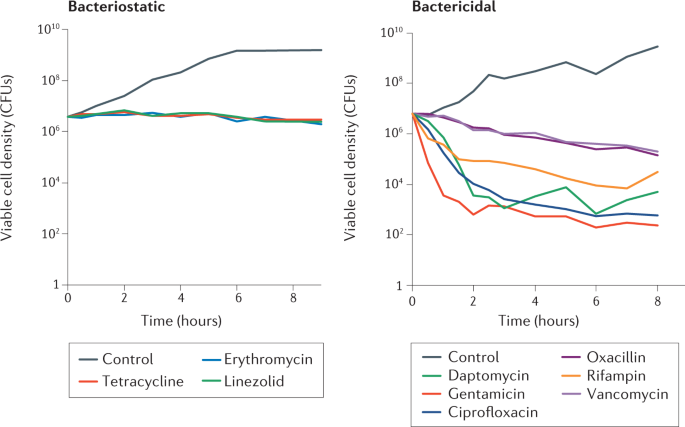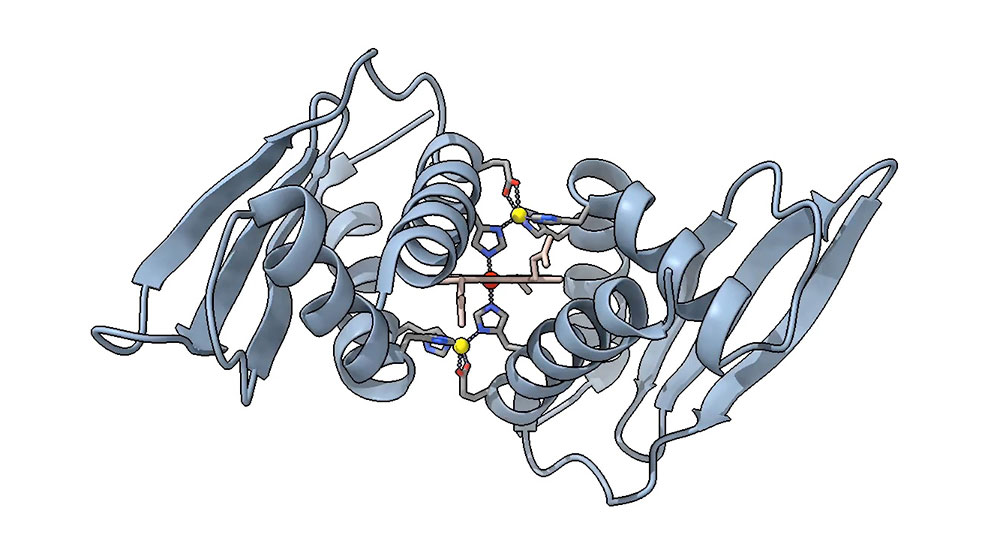Discover Pandipedia
Pandipedia is the world's first encyclopaedia of machine generated content approved by humans. You can contribute by simply searching and clicking/tapping on "Add To Pandipedia" in the answer you like. Learn More
Expand the world's knowledge as you search and help others. Go you!

Chef’sChoice Trizor 15XV Professional Electric Knife Sharpener
This electric sharpener features a three-step process that creates a razor-sharp blade using diamond abrasives, suitable for most Japanese knives and very effective for restoring dull blades[2][8].

Work Sharp Electric Culinary E2 Kitchen Knife Sharpener
This compact electric sharpener features two abrasive discs for sharpening and a ceramic honing wheel for maintaining sharp edges, perfect for German-style knives[2][8].
Work Sharp Ken Onion MK.2
A versatile belt sharpening system that is capable of handling various blade types and includes adjustable angle guides for precision sharpening[1][7].

Chef’sChoice 4643 Manual Knife Sharpener
A manual sharpener offering slots for both 15- and 20-degree angles, featuring diamond abrasives for effective sharpening[2][8].

Sharp Pebble Premium Whetstone Knife Sharpening Stone
A double-sided whetstone featuring a non-slip bamboo base and angle guide, ideal for beginners and experience sharpeners alike[2].
Tormek T-4
A water-cooled grinding system known for its efficiency and ability to maintain sharp edges without overheating the blade[1][7].
Work Sharp Precision Adjust Kit
This sharpener locks down the blade and keeps sharpening plates at a constant angle, eliminating the learning curve associated with traditional sharpening methods[3][7].
Smith’s Diamond Combination Sharpener
A portable tool designed for quick touch-ups, suitable for various types of knives, including outdoor and fishing knives[2][7].
Minosharp Water Sharpener
A small, handheld sharpener with water wheels that provides effective sharpening while being easy to use and store[6][7].
Global Shinkansen Water Sharpener
Specifically designed for Japanese knives, this wet sharpener offers dual coarseness levels for effective sharpening[4].
Wüsthof Universal Hand-Held Knife Sharpener
A two-slot pull-through manual sharpener that uses carbide blades for sharpening and ceramics for honing, suitable for different types of knives[5].

Horl 2 Pro
A unique magnetic sharpener that uses a cylindrical roller to sharpen, producing impressively sharp edges with ease of use[6].
Benchmade Knife Company’s Station and Table Knives
These were used as benchmarks for testing different sharpening systems, showcasing their durability and effectiveness in testing[1].
DMT Dia-Sharp Diamond Stone
A heavy-duty sharpening stone that stays flat and requires minimal maintenance, ideal for both novices and experts[7][9].
Keenbest Sharpening Stone Set
An affordable whetstone set that includes two stones of different grits, suitable for both beginners and more experienced users[7].
Zwilling V Edge Knife Sharpener
This upright knife sharpener features multiple rods for sharpening and honing, allowing for a precise and effective sharpening process[6].
KitchenIQ Edge Grip 2-Stage Knife Sharpener
An inexpensive pull-through sharpener that works on both straight and serrated knives, designed for easy use[8].
EverSharp Electric Knife Sharpener by Presto
Known for its affordability and proficiency, this sharpener features automatic blade stall to prevent over-sharpening[3].
Tumbler Original Diamond Rolling Knife Sharpener
A user-friendly sharpener that uses a rolling mechanism for fast, effective sharpening[7].
Sharpal 191H and Scrissors Sharpener
A versatile sharpener designed for a range of knife types, featuring a suction cup base for stability[5][7].
Victorinox Knife Sharpener
An ergonomic and straightforward sharpener that uses one wheel for effective sharpening[6].
Whetstone Sharpening Kit
Includes everything needed to master the whetstone sharpening process, providing high-quality results over time[4][7].

ProCook Combination Whetstone
A compact whetstone for beginners featuring 600- and 2000-grit surfaces for effective sharpening and polishing[6].
KitchenIQ Comfort Grip Knife Sharpener
A comfortable, handheld sharpener for quick touch-ups, allowing for 15 strokes to sharpen[5][8].
DMT Whetstone, 8-Inch
Known for its high-quality diamond abrasive, this whetstone is suitable for durable and effective sharpening[9].
Presto Professional Electric Knife Sharpener
An effective electric sharpener with easy operation and sturdy build, offering professional-level results[3][9].
Cangshan Pro Series Sharpening Kit
A comprehensive sharpening kit featuring a range of tools for different knives and edge styles[7].
Sharpmaker by Spyderco
A semi-guided sharpening system allowing for easy sharpening of various knives while maintaining a sharp edge[7][8].
CATRA Knife Sharpness Tester
A device used to test the effectiveness of a knife sharpener by measuring the sharpness of the blade after sharpening[5].
Let's look at alternatives:
- Modify the query.
- Start a new thread.
- Remove sources (if manually added).
- Request a manual search from our human research team.
Antibiotics are crucial tools in the treatment of bacterial infections, employed to eradicate or inhibit the growth and reproduction of harmful microorganisms. They function through various mechanisms that specifically target bacterial physiology, making them less harmful to human cells. Understanding how these agents work is essential, especially in the face of rising antibiotic resistance.
Targeting Unique Bacterial Structures

Many antibiotics exploit the unique structures found in bacterial cells that are absent in human cells. For instance, most bacteria possess a cell wall made of peptidoglycan, which is vital for maintaining their shape and integrity. Antibiotics such as penicillin interfere with the synthesis of this cell wall. Penicillin specifically blocks the transpeptidation step in peptidoglycan assembly, leading to a fragile cell wall that cannot withstand osmotic pressure, ultimately causing the bacterial cell to burst and die[6][7].
Beta-lactams, a major class of antibiotics that includes penicillin, mimic the molecular structure of the D-alanyl-D-alanine portion of peptidoglycan precursors, allowing them to bind to penicillin-binding proteins (PBPs) essential for cell wall synthesis. This binding inhibits the enzyme's function and disrupts peptidoglycan layer formation, leading to bacterial lysis[2][5].
Inhibition of Protein Synthesis

Antibiotics can also inhibit bacterial growth by targeting protein synthesis. Ribosomes, the cellular machinery for protein production, differ between human and bacterial cells, allowing antibiotics to selectively disrupt bacterial protein synthesis. For example, aminoglycosides bind to the 30S ribosomal subunit, causing misreading of mRNA and premature termination of protein synthesis, which leads to cell death[2][3][7]. Tetracyclines operate through a similar mechanism, blocking the access of aminoacyl-tRNA to the ribosome, effectively halting translation[2][3].
Notably, the bactericidal effect of certain ribosome-targeting antibiotics is not solely due to halting protein synthesis but may also involve triggering oxidative damage pathways. Aminoglycosides, for instance, can induce toxic mistranslated proteins that disrupt membrane integrity, contributing to cell death[1][4][5].
Disruption of Nucleic Acid Synthesis

Other antibiotics, such as rifampicin and quinolones, target nucleic acids. Rifampicin inhibits DNA-dependent RNA polymerase, blocking the initiation of transcription and subsequently leading to protein synthesis cessation. This impact on transcription can produce rapid bactericidal effects, particularly in slowly growing bacteria[3][5][6].
Quinolones, including fluoroquinolones, disrupt DNA replication by inhibiting topoisomerases, enzymes critical for maintaining DNA structure. They interfere with the action of DNA gyrase and topoisomerase IV, leading to the formation of stable drug-enzyme-DNA complexes that prevent DNA unwinding, essential for replication and transcription[1][3][5]. This ultimately results in bacterial cell death via mechanisms associated with DNA damage and the activation of stress response pathways, particularly the SOS response, which can lead to further complications for the bacterial cell[1][3][4].
Oxidative Stress and Cell Death

Increasing evidence points to a common mechanism by which various classes of bactericidal antibiotics induce cell death, primarily through the generation of reactive oxygen species (ROS). When bacteria are exposed to lethal concentrations of antibiotics, metabolic alterations can result in oxidative stress, producing harmful superoxide and hydroxyl radicals. This oxidative damage can impair various cellular components, including DNA and proteins, contributing to cell lysis and death[1][4].
For instance, research indicates that different antibiotics can stimulate ROS production via drug-induced changes in central metabolism, leading to the generation of cytotoxic hydroxyl radicals[1][4][5]. This pathway underscores the complexity of antibiotic action, as it highlights the interplay between direct antibacterial effects and cellular stress responses.
The Challenge of Antibiotic Resistance
Despite the advances in understanding antibiotic mechanisms, bacterial resistance is an escalating challenge. Bacteria can adapt through various mechanisms, such as modifying drug targets, producing enzymes that deactivate antibiotics, or enhancing efflux pumps to expel the drugs more effectively. For example, mutations in PBPs can confer resistance to beta-lactam antibiotics, making treatment more challenging[2][6][8].
Antibiotic stewardship, including proper usage based on sensitivity testing, is vital in managing the development of resistance. Understanding the mechanisms by which antibiotics work can aid in the development of new agents and strategies to combat antibiotic-resistant infections. Continued research into the molecular interactions and metabolic pathways affected by antibiotics remains critical for advancing treatment methodologies and ensuring patient safety[3][4][7][8].
Conclusion
Antibiotics function through diverse and intricate mechanisms that exploit the distinct characteristics of bacterial cells. By disrupting cell wall synthesis, inhibiting protein and nucleic acid production, and inducing oxidative stress, these compounds effectively combat bacterial infections. However, the rise of antibiotic resistance highlights the need for ongoing research and prudent use of these vital medications. Understanding antibiotic mechanisms is essential not only for current therapeutic strategies but also for developing innovative approaches to future bacterial infections.
Let's look at alternatives:
- Modify the query.
- Start a new thread.
- Remove sources (if manually added).
- Request a manual search from our human research team.
Get more accurate answers with Super Search, upload files, personalised discovery feed, save searches and contribute to the PandiPedia.
Let's look at alternatives:
- Modify the query.
- Start a new thread.
- Remove sources (if manually added).
- Request a manual search from our human research team.
Overview and Research Motivation
The paper titled "The Illusion of Thinking: Understanding the Strengths and Limitations of Reasoning Models via the Lens of Problem Complexity" investigates how recent generations of Large Reasoning Models (LRMs) behave when they generate chain-of-thought reasoning traces before providing final answers. The study focuses on understanding the capabilities and limitations of these models, especially when they are tasked with problems that require sequential reasoning and planning. The authors raise questions about whether these models are truly engaging in generalizable reasoning, or if they are simply executing a form of pattern matching, as suggested by the observations from established mathematical and coding benchmarks[1].
Experimental Setup and Controlled Puzzle Environments

To thoroughly analyze the reasoning behavior of LRMs, the researchers designed a controlled experimental testbed based on a series of algorithmic puzzles. These puzzles include well-known planning challenges such as the Tower of Hanoi, Checker Jumping, River Crossing, and Blocks World. Each of these puzzles allows for precise manipulation of problem complexity while preserving a consistent logical structure. For example, the Tower of Hanoi puzzle is used to test sequential planning as its difficulty scales exponentially with the number of disks, while Checker Jumping requires adherence to strict movement rules to swap red and blue checkers. The controlled environments help in examining not only the final answer accuracy but also the complete reasoning process, including intermediate solution paths, correctness verification, and how these models use token budgets during inference[1].
Key Findings and Performance Regimes
A major insight from the study is the identification of three distinct performance regimes as problem complexity increases. In the first regime with low complexity, standard models that do not produce explicit reasoning traces can sometimes outperform LRMs. As the complexity reaches moderate levels, models with chain-of-thought generation begin to show a distinct advantage, as their thinking process helps to navigate more intricate puzzle constraints. However, in the third regime characterized by high problem complexity, both thinking and non-thinking models experience a complete collapse in accuracy. The experiments revealed that beyond a certain threshold, the reasoning performance of LRMs falls to zero despite having ample token budgets. An interesting phenomenon observed is that as problems become more complex, the models initially increase their reasoning tokens, but then counterintuitively reduce them when faced with extreme difficulty. This decline in reasoning effort is accompanied by inconsistent reasoning and a failure to maintain the appropriate computational steps throughout the solution process[1].
Analysis of Intermediate Reasoning Traces
The paper places significant emphasis on inspecting the intermediate reasoning traces produced by the models. By extracting the chain-of-thought, the study examines where correct and incorrect intermediate solutions occur and how these affect the overall problem-solving process. In simpler problems, correct solutions are identified early in the reasoning process; however, the model tends to overthink by exploring redundant paths, which can lead to inefficiencies. In contrast, with moderate complexity tasks, models begin by generating several incorrect solutions before eventually arriving at a correct answer. Notably, in very complex problems, no correct moves are generated at any point, leading to a complete breakdown in reasoning. This detailed analysis provides evidence of the models’ limited self-correction capabilities and highlights fundamental scaling issues in inference compute allocation as problem complexity increases[1].
Exact Computation and Algorithm Execution
Another significant observation made in the paper is the models’ difficulty with exact computation and following prescribed algorithmic steps. For instance, even when the researchers provided the models with a complete recursive algorithm for the Tower of Hanoi puzzle, there was no notable improvement in performance. The models still exhibited the same collapse at a certain level of complexity, indicating that the failure was not due solely to the challenge of finding a solution from scratch but also due to a more systemic limitation in performing strict, logical step-by-step execution. This inability to capitalize on provided algorithmic guidance underscores the gap between human-like logical reasoning and the pattern-based reasoning exhibited by current LRMs[1].
Limitations and Implications for Future Research

The study makes it clear that although LRMs have shown promising results on a variety of reasoning benchmarks, they still face severe limitations. The performance collapse at high complexity levels, the counterintuitive reduction in reasoning tokens despite increased problem difficulty, and the inability to reliably perform exact computations suggest that fundamental improvements are needed. The paper questions the current evaluation paradigms that focus primarily on final answer accuracy and advocates for metrics that assess intermediate reasoning quality. By using puzzle-based environments that allow precise manipulation of complexity and clear rule definitions, the research provides quantitative insights into where and why LRMs fail. These insights are crucial for guiding future improvements in model architecture and training methodologies, paving the way for the development of models with more robust and generalizable reasoning capabilities[1].
Conclusion
In summary, the paper provides a comprehensive examination of the capabilities and limitations of Large Reasoning Models through controlled experimentation with algorithmic puzzles. Crucial findings include the identification of three complexity regimes, detailed analysis of intermediate reasoning traces, and a demonstration of the models’ difficulties with exact computation and following explicit algorithmic steps. The research highlights that while chain-of-thought generation can enhance performance at moderate complexity, current LRMs ultimately fail to exhibit generalizable reasoning for highly complex tasks. These findings raise important questions about the true nature of reasoning in these systems and suggest that further research is needed to overcome the observed scaling and verification limitations[1].
Let's look at alternatives:
- Modify the query.
- Start a new thread.
- Remove sources (if manually added).
- Request a manual search from our human research team.
Let's look at alternatives:
- Modify the query.
- Start a new thread.
- Remove sources (if manually added).
- Request a manual search from our human research team.
Metroid Fusion
An exceptional 2D Metroid game known for its narrative-driven experience and atmospheric setting[3].
The Legend of Zelda: The Minish Cap
A beloved handheld Zelda game featuring unique puzzles through Link's ability to shrink and grow[5].
Golden Sun
A classic RPG with stunning graphics and deep gameplay mechanics focusing on elemental powers[2][4].
Pokémon Emerald
The best of the third generation Pokémon games, enhancing the experiences from Ruby and Sapphire[3][4].
Mario & Luigi: Superstar Saga
A humorous and clever RPG that introduced a fun battle system with unique brotherly interactions[3][5].
Castlevania: Aria of Sorrow
Celebrated as one of the best Castlevania games, featuring a modern setting and tactical soul mechanics[4].
Advance Wars
A turn-based tactic game that allows players to control armies and engage in strategic warfare[3][5].
WarioWare: Twisted
A creative microgame compilation that utilizes a gyro sensor for interaction, enhancing the chaotic fun[4][5].
Tony Hawk’s Pro Skater 2
A fantastic portable rendition of the classic skating game, modified for the GBA with great controls[5].
Final Fantasy Tactics Advance
A tactical RPG that captures the charm of the Final Fantasy universe with strategic gameplay[3][4].
Super Mario Advance 4: Super Mario Bros. 3
The definitive handheld version of the iconic platformer, featuring enhanced graphics[5].
Harvest Moon: Friends of Mineral Town
A charming farming simulation game allowing players to manage crops and relationships[4].
Drill Dozer
A unique platformer featuring inventive drills and fun gameplay mechanics that stand out on the GBA[4].

Kirby: Nightmare in Dream Land
A remake of Kirby's Adventure, bringing classic platforming to the handheld with added features[3].
Donkey Kong: Original Edition
A remake that expands on the classic arcade game, offering new challenges and levels[4].
Final Fantasy I & II: Dawn of Souls
A collection offering modern updates to classic FF titles with new content and adjustments[2].
Pokémon FireRed and LeafGreen
Remakes of the original Pokémon games, adding new features and allowing for compatibility with newer titles[5].
Sonic Advance
A well-received platformer that successfully captures the essence of classic Sonic games[4].

F-Zero: Maximum Velocity
A racing game that retains the thrilling F-Zero experience while adapting it for the GBA[3].

Astro Boy: Omega Factor
A beat-em-up that combines great gameplay with a storyline inspired by the original manga[3].
Let's look at alternatives:
- Modify the query.
- Start a new thread.
- Remove sources (if manually added).
- Request a manual search from our human research team.
Get more accurate answers with Super Search, upload files, personalised discovery feed, save searches and contribute to the PandiPedia.
:max_bytes(150000):strip_icc()/how-to-start-a-garden-from-scratch-2132778-hero-5f6138784a034bad8bf9607ccb18dbed.jpg)
Starting a DIY garden can be a rewarding project, allowing you to create a space that provides beauty, food, and relaxation. Here’s a structured guide on how to take the first steps toward establishing your garden.
1. Define Your Garden’s Purpose
Before diving into planning, it's crucial to decide what you want your garden to achieve. Consider how you will use the space—whether for hosting gatherings, growing vegetables, or providing a serene area for relaxation. Create a wishlist of features such as a seating area, storage for gardening tools, or space for children to play. Categorize these items into essential, important, and desirable to prioritize your planning efforts[2][8].
2. Assess Your Space
:max_bytes(150000):strip_icc():format(webp)/find-your-usda-zone-3269819-3ee8d9b8a550496d80a8aa297fa6113c.png)
Take a close look at the area designated for your garden. Clear any debris or overgrown plants to get an accurate picture of the space's size and layout. Measure your boundaries, noting any existing features like trees or fences that could serve as partial structures or shade providers. A well-measured plan will allow you to visualize what can fit comfortably within your garden[2][6][8].
3. Gather Inspiration and Create a Mood Board
:max_bytes(150000):strip_icc():format(webp)/how-to-start-a-garden-from-scratch-2132778-hero-5f6138784a034bad8bf9607ccb18dbed.jpg)
Collect ideas from various sources like gardening websites, Pinterest, or magazines. Look for styles and designs that resonate with you. Create a mood board to consolidate your ideas, reflecting the aesthetics you want in your garden. This visual reference can guide your design choices and planting selections as you move forward[2][8].
4. Plan Your Garden Layout
:max_bytes(150000):strip_icc():format(webp)/make-diy-seed-starting-mix-3016715-hero-aac204623bae4f1e8f89d8e6c95301e4.jpg)
Using graph paper, draw a scaled base plan of your garden, incorporating the measurements you've taken. Define different zones for activities or plant types—like vegetable beds, flower borders, or seating areas—while considering sunlight exposure and natural landscape features. For instance, place seating areas where you can enjoy the sunset and designate sunny spots for sun-loving plants[2][8][10].
5. Test and Prepare Your Soil
Assess the existing soil conditions through testing to understand its pH and nutrient levels. This can often be done through local extension services. Healthy soil is a cornerstone of a fruitful garden. Depending on the results, you may need to amend the soil with organic materials like compost to improve fertility and drainage. Aim for a rich, well-aerated mix that promotes root growth[1][4][10].
6. Choose What to Plant
:max_bytes(150000):strip_icc():format(webp)/Raised-Bed-GettyImages-141860394-5a32e3f0eb4d520037633e04.jpg)
Decide what types of plants you want in your garden, focusing on fruits, vegetables, herbs, and flowers that your family will enjoy. If you want colorful blooms, consider planting annuals that need replanting each year or perennials that return season after season. Make sure to select plants suited to your climate and the specific light conditions of your garden[1][5][7].
7. Select Your Seeds and Transplants
When it comes to sourcing plants, you have two primary options: growing from seed or purchasing established transplants from a nursery. If opting for seeds, refer to the planting instructions on the packets for depth and spacing. If you prefer transplants, choose robust, healthy plants with no signs of stress or disease. Ensure your selected plants align with your garden's conditions and your personal preferences[5][10].
8. Prepare Your Garden Beds
:max_bytes(150000):strip_icc():format(webp)/bone-meal-fertilizer-pros-and-cons-5093936-hero-c96b4a6f26e84ec79bf9128e464d123e.jpg)
Use the cleared space to create planting beds. For quick results, you can remove sod directly or use a method like 'lasagna gardening,' which involves layering cardboard and compost. This method enriches the soil over time and suppresses weeds. As you prepare the beds, incorporate quality compost to enrich the soil and ensure adequate aeration[3][4][7][9].
9. Planting Techniques
When you're ready to plant, follow best practices: sow seeds at the recommended depth or plant transplants at the same depth they were originally in their pots. Ensure adequate spacing to prevent overcrowding, which can lead to poor growth and increased pest problems. Water plants appropriately after planting to help establish their roots[1][7][10].
10. Watering and Maintenance
:max_bytes(150000):strip_icc():format(webp)/install-landscape-fabric-for-weed-control-3a-12d3d7ebc35140519f03841f32694dea-9ad32c4e00014b45bf68137596530b3b.jpg)
After planting, maintain a regular watering schedule, adjusting based on the plants' needs and the weather conditions. Most plants appreciate about an inch of water weekly. As your garden grows, incorporate mulch to retain moisture and suppress weeds. Keep an eye on plant health, weeding regularly and harvesting your crops promptly to encourage further growth[5][10].
Conclusion
Starting a DIY garden requires careful planning, but the rewards are plentiful. By defining your purpose, assessing your space, selecting the right plants, and maintaining them, you can cultivate a vibrant garden that enhances your home and provides fresh produce and enjoyment for years to come. Embrace the learning process, and remember that gardening is an evolving journey that can bring joy and satisfaction.
Let's look at alternatives:
- Modify the query.
- Start a new thread.
- Remove sources (if manually added).
- Request a manual search from our human research team.
Role of Photosynthesis in Plants
Photosynthesis is a crucial process for plants, enabling them to convert sunlight into usable energy through photosynthetic activity. This process plays a fundamental role in sustaining life on Earth by producing oxygen and glucose, essential for plant survival and food production for other organisms. Photosynthesis specifically involves capturing energy from sunlight to create oxygen and simple sugars, providing fuel for plants to grow and thrive.
Importance of Photosynthesis

The significance of photosynthesis lies in its ability to convert carbon dioxide and water into oxygen and sugars[5], allowing plants to produce the oxygen we breathe and the energy-rich molecules necessary for their growth. This process supports almost every food chain[2], serving as the foundation for life on our planet. Without photosynthesis, life as we know it would not be sustainable, highlighting its critical role in maintaining ecosystems.
Enhancing Photosynthesis for Improved Crop Yields

Scientists and researchers are continually exploring ways to enhance photosynthesis in plants to improve crop yields, resilience to climate change, and overall efficiency. One innovative approach involves gene-editing techniques that boost crop photosynthesis by enhancing gene expression. By increasing the natural ability of plants to utilize sunlight effectively, this method aims to increase global food production[1] and ensure food security amidst environmental challenges.
Mechanisms of Photosynthesis

Within plants, photosynthesis occurs within chloroplasts, where chlorophyll absorbs light energy to convert it into chemical energy. This process involves taking in carbon dioxide and water[5] to create glucose and release oxygen back into the air[3]. Different types of photosynthesis, such as C3 and C4 pathways, have evolved to adapt to varying environmental conditions, demonstrating the adaptability of plants in harnessing sunlight for energy production.
Protein Regulation in Photosynthesis

Proteins play a vital role in regulating photosynthesis reactions and adapting to changing environmental conditions. Proteins like Domain Related to Iron[5] have been identified as key players in fine-tuning energy production in cyanobacteria, aiding in their adaptation to diverse environments. Understanding the intricate mechanisms behind protein regulation in photosynthesis provides insights into how plants adjust to different conditions and optimize their energy production capabilities.
In conclusion, photosynthesis is a fundamental process for plants that enables them to produce oxygen and energy-rich molecules essential for life on Earth. By enhancing photosynthesis through innovative techniques and studying protein regulation, scientists aim to improve crop yields, increase food production, and promote sustainability in agriculture. The role of photosynthesis in plants goes beyond individual growth; it sustains ecosystems, supports biodiversity, and ensures the continuity of life on our planet.
Let's look at alternatives:
- Modify the query.
- Start a new thread.
- Remove sources (if manually added).
- Request a manual search from our human research team.

Boll & Branch Signature Hemmed Sheet Set
Luxuriously soft and made from Global Organic Textile Standard-certified cotton, offering a high-end look and breathable feel[6].
Brooklinen Core Luxe Sheets
Known for their buttery feel and smooth texture, these sheets feature a 480-thread count and come in multiple colors, ensuring a fashionable addition to any bedroom[7].
Saatva Sateen Sheet Set
These sheets are made from sustainably sourced long-staple cotton, providing an ethical option without sacrificing comfort. They have a thread count of 300, suitable for various mattress sizes[7].
Peacock Alley Sateen Sheet Set
Featuring 420-thread count extra-long staple cotton, they promise a buttery soft feel and are available in various colors[7].
Lands’ End Premium Supima Cotton Sateen Sheet Set
Praised for its smooth texture and breathability, this sheet set is durable and maintains quality over time[6].
Threshold 400 Thread Count Printed Performance Sheeting
A budget-friendly option that feels premium despite its lower price point, making it accessible for those looking for comfort without breaking the bank[6].
:max_bytes(150000):strip_icc()/garment-washed-sateen-sheet-collection-lilac-mist-10fac52c3d8241648a2050a890aa2c43.jpg)
L.L. Bean Garment Washed Sateen Collection
Known for durability and a soft touch, with a medium weight and minimal wrinkling post-wash, perfect for a cozy sleep[6].

The Company Store Basic Cotton Sateen Sheet Set
A simpler option that still retains a luxury feel and moderate pricing, suitable for everyday use[2].
Cuddledown Sateen Sheet Set
Offers a wrinkle-resistant finish and luxurious softness, ideal for those who want hotel-like bedding at home[1].

SCOOMS Egyptian Cotton Bedding
With a 600 thread count, it is extremely soft and retains its shape and texture after washing[4].
Quince Luxury Organic Signature Sheet Set
Made from long-staple organic cotton, offering heaviness and comfort while remaining breathable[7].

Emma 100% Cotton Sateen Duvet Cover
This set feels luxurious while being easy to care for, perfect for those who appreciate elegance without too much upkeep[4].
Sleep Number Performance Sheets
Designed for ultimate comfort with moisture-wicking properties, ideal for those who value sleep quality[1].
AllModern Sateen Sheet Set
An affordable yet luxurious option with a simple design that fits well in any modern bedroom[2].
Sheex Performance Sateen Sheets
Known for their athletic fabric properties, these sheets are breathable and moisture-wicking, making them perfect for active sleepers[1].
Macy’s Hotel Collection Sateen Sheets
Offering that luxurious hotel experience, made with high-quality cotton to ensure comfort and softness[2].
Riley Home Sateen Sheets
Known for their breathable fabric and deep pockets, ideal for thicker mattresses[1].
Ettitude Bamboo Lyocell Sateen Sheets
Soft and eco-friendly, these bamboo sheets are reputed for their cooling properties, suitable for hot sleepers[2].
Cozy Earth Bamboo Sateen Sheets
Made from 100% bamboo viscose, hypoallergenic and incredibly soft, making them appealing for sensitive skin[7].
Mushroom Linens Supima Cotton Sateen Set
Featuring a refined finish and breathable qualities ideal for warm climates[1].
Tencel Lyocell Sateen Sheets by Brooklyn Bedding
Luxurious and eco-friendly, these sheets provide a soft feel and are easy to care for[7].

Dusk Portofino Waffle 200 Thread Count Bedding Collection
A unique choice providing a lovely textured finish along with comfort[4].
Let's look at alternatives:
- Modify the query.
- Start a new thread.
- Remove sources (if manually added).
- Request a manual search from our human research team.

People prefer handcrafted goods for several reasons. First, they value the uniqueness and quality of handmade items, which carry the individual touch and story of the artisan. As one source notes, 'no two handmade items are the same,' making them special and personal compared to mass-produced products[4]. These items also support local economies and artisan livelihoods, which fosters a sense of community and connection between consumers and makers[1][2].
Additionally, handcrafted products are often made with sustainable materials and practices, reducing environmental impact[3]. This aligns with a growing consumer preference for eco-friendly choices and mindful spending, as many buyers are 'respecting every dollar as an extension of ourselves'[1].
Let's look at alternatives:
- Modify the query.
- Start a new thread.
- Remove sources (if manually added).
- Request a manual search from our human research team.


















































































































:max_bytes(150000):strip_icc():format(webp)/spr-product-quince-luxury-organic-signature-sheet-set-hwortock-018-87afc8edb5214331bb31156cdfd9f25d.jpg)
:max_bytes(150000):strip_icc():format(webp)/quince-luxury-organic-signature-sheet-set-9cd083116ede49ff83b0d06e891849d9.jpg)
:max_bytes(150000):strip_icc():format(webp)/spr-product-quince-luxury-organic-signature-sheet-set-hwortock-018-87afc8edb5214331bb31156cdfd9f25d.jpg)
















